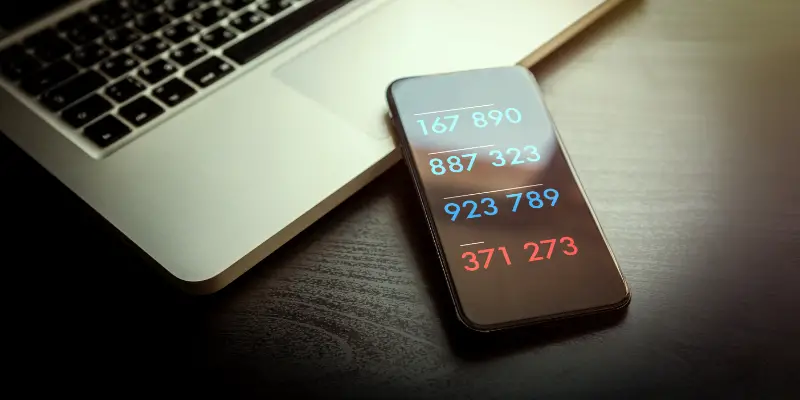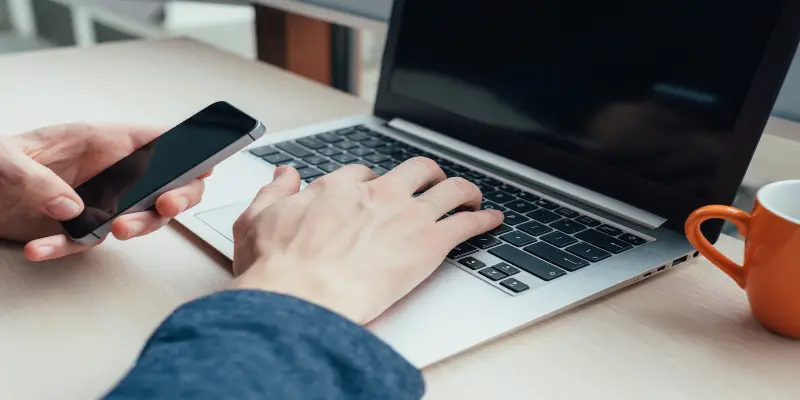Disclaimer: This post may contain affiliate links, meaning we get a small commission if you make a purchase through our links, at no cost to you. For more information, please visit our Disclaimer Page.
Two-factor authentication is a great way to keep your computer, data, and accounts safe. Here’s how:
Users must have a password and a second factor, typically a security token or a biometric factor, such as a fingerprint or a facial scan. It can be done for a laptop by using Microsoft Account or macOS. You can set a Login PIN and a Picture Password for a safe login to your Windows PC.
Through this article, I will be highlighting the need for two-way authentication and how you can set it up on your laptop.
Table of Contents
Can You Put A Two-Factor Authentication On A Laptop?
In the two-factor authentication process, users must verify their identities with two separate authentication factors. Dual factor authentication refers to two-factor authentication or two-step verification.
This procedure secures the user’s credentials as well as the services that the user has access to. Single-factor authentication comprises only one factor, usually a password or passcode, and offers a lower degree of security. Two-factor authentication adds an additional level of security.
On a laptop, you can use two-factor authentication. Users are recognized by a user ID, and authentication occurs when the user offers a credential, such as a password, that corresponds to that user ID.
Most users are accustomed to using a password, which is a knowledge authentication factor since it is information that is known only by the user.
Multi-factor authentication, which includes two or more methods of authentication, is a subset of two-factor authentication. You will need a password, a code, and a biometric sign-on such as a fingerprint or retinal scan.
While a hacker may be able to guess your password (they are notoriously good at it), they will have a tough time breaching the second layer of protection since codes are established on the fly (they change all the time) and biometrics are tough to copy.
Implementing an authenticator program such as Google Authenticator, Microsoft Authenticator, Authy, and others is the best approach to set up two-factor authentication.
Google Authenticator is a free smartphone app available for Android and iOS from Google.
You must first set up two-factor authentication on your internet services before you can utilize it. The user will next be asked to photograph a QR code provided by the service.
Google Authenticator will produce random codes as the second authentication after reading the code.
Authenticator apps generate codes that are shared across all of your accounts. Microsoft Authenticator is a free authenticator program that operates similarly to Google’s – it uses QR codes – and is compatible with Android, iOS, and Windows 10.
How Do You Setup Two-Factor Authentication On Mac?
Depending on how recent your iOS software is, the instructions will alter significantly. If you’re using iOS 10.3 or later, go to Settings > [Your Name] > Password & Security to enable 2FA on your Apple ID. When you enable 2FA, you will receive a text message with a code each time you log in.
If you are running iOS 10.2 or earlier, go to iCloud > Apple ID > Password & Security to change your settings.
Depending on whatever version of macOS you have, the instructions are slightly different.
If you are using Catalina, go to System Preferences > Apple ID, then click the Apple icon in the upper-left corner of your screen. Select Turn On Two-Factor Authentication under Password & Security under your name.
After clicking the Apple icon in Mojave or earlier, go to System Preferences > iCloud > Account Details. When you go to Security, you will see the option to enable 2FA.
The remaining steps are the same whether you’re using iOS or a Mac. Apple will send you a six-digit verification number either through text or phone call. The physical security key can also be generated here.
Does Windows 10 Have Two-Factor Authentication?
Two-step authentication is a Microsoft account protection feature that adds a second level of verification to make it harder for malicious individuals to gain access to your account.
Without the second method of authentication, it would be almost impossible to enter your account if your password is cracked.
You can use the Microsoft Authenticator software to set up two-step verification if you have a Microsoft account. If the feature is available, you’ll need to check a security code with your phone every time you sign in to ensure that you’re who you think you are.
How Do You Setup Two-Factor Authentication On Windows 10?
- Go to your Microsoft Account online. Use your login credentials to log in. Build a new one if you don’t already have one.
- Now, from the menu bar, select the Security tab and then More Security Queries.
- Locate the choice for two-step verification and select Set up two-step verification.
- Now, follow the on-screen directions and press the Next button.
- Choose one of the options under Verify my identity with an app, a phone number, or An alternative email address in the next window. You are free to choose whichever is most convenient for you.
- Make sure you have access to the chosen option at the time of sign-in. You will not obtain a security code to sign in until you do so.
- Select your country, then enter your phone number and choose whether to verify it through text or call.
Your two-step verification will be allowed once you have checked your phone number, and you will also obtain a recovery code, which you will use to restore your account in the future.
It’s a good idea to print it or write it down and keep it somewhere secure.
You must now go through 2-Step verification any time you log into your account.
You can also set a Login PIN and a Picture Password for a safe login to your Windows PC.
Can You Use Google Authenticator On Laptop?
Using two-factor authentication is one of the best ways to safeguard your online accounts from being hacked (2FA).
This adds a second layer to the sign-in process, requiring you to utilize a one-time-only generated code (often produced on your smartphone) to successfully sign in using Google Authenticator.
That is, assuming you have a smartphone with the Google Authenticator app loaded. If you don’t have one, your options are restricted, but you can use Google Authenticator on your PC without a second device.
Here’s everything you’ll need to get started with Google Authenticator on Windows 10.
Your account is at risk if your username and password are disclosed online. Even if you use a password manager, you’ll still need to reset any passwords that have been compromised as a result of the attack.
You can use a two-factor authentication service like Google Authenticator to assist you to get around this problem. To securely login into Google and other online services, this produces a one-time password (OTP).
If the hacker doesn’t know your 2FA credentials, it doesn’t matter if your password is compromised. Two-factor authentication (or 2FA) offers an extra layer of security.
To generate the codes, use a third-party tool to install Google Authenticator on your Windows PC and enter the secret code that corresponds to your Google account.
The secret code functions similarly to a master password; without it, the codes generated will not be valid for completing a 2FA sign-in.
This code will only work for logging into your Google account; however, you’ll need similar codes to link your other online accounts to a 2FA software on your Windows PC.
Conclusion
Two-factor authentication (also known as 2FA) is becoming increasingly common. Many platforms encourage us to use it on our online accounts because of its simplicity and the fact that it can significantly improve security.
Many businesses, including Gmail, Outlook, Battle.net, Origin, ArenaNet, and others, use two-factor authentication to keep your account safe.
Traditional username and password are combined with a secondary feature in two-factor authentication (2FA).


